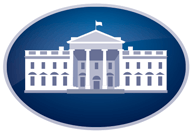Meeting with others about early childhood STEM education–at a conference, at the White House
By Peggy Ashbrook
Posted on 2016-04-24
The powerful learning that comes of getting together with others who are interested in the same topic can lead to action that increases opportunities for all children to engage in science and engineering explorations. Let’s not leave out using technology and mathematics since these areas of learning are so intertwined with the S and E that they are often referred to as “STEM” learning. Hearing about the work of others also lifts my spirits when I’m feeling that early childhood science education could be so much more effective and widespread than it is.
I had the opportunity to attend two such gatherings with education professionals who have been in the classroom and field much longer than I have: the National Science Teachers Association’s 2016 national conference March 31-April 3, and the White House Early Learning STEM Symposium, held on April 21 in partnership with the U. S. Department of Education, U. S. Department of Health and Human Services and Invest In US.

![]()
![]()
![]()
The White House Early Learning STEM Symposium partners include Invest in US (organized by the First Five Years fund), the Heising-Simons Foundation and the National Association for the Education of Young Children. The National Science Teachers Association was represented by President Dr. Carolyn Hayes. As Roberto Rodriquez Deputy Assistant to the President for Education said, the administration’s challenge to the country is a “collective call to action to strengthen and support STEM early learning.”
Secretary of Education, John B. King, noted that spending on early childhood education has an 8:1 return on the investment in terms of better long term academic, health, and success in the workforce outcomes. He charged the participants to begin in early childhood to close achievement gaps in education that will help close the diversity gaps the STEM fields by being laser focused on our highest need students and what’s happening in their early learning classrooms.King also spoke about talking with children, noting that they remembered early learning STEM experiences as learning opportunities and joyful experiences: “This work on early learning STEM experiences is not just about ensuring a strong academic foundation; it’s about the joy that comes in learning about, and coming to understand, how the world worked.”
Watch his full speech and the panel discussion on “What Does the Research Say About Early STEM?” in the video of the White House Early Learning STEM Symposium.
[youtube]https://www.youtube.com/watch?v=iUvEks2tutw[/youtube]
The national NSTA conference in Nashville had so many sessions that I wanted to attend that I could not get to them all. So I turned to the session schedule to see if any of those I could not attend had posted handouts to give me a bit of information about what I missed.
(Note: if you attended sessions, please help presenters by giving feedback through evaluating the sessions. Go to the conference schedule, search for the sessions you attended and click on the evaluation button at the bottom of each session description.)
I searched for keyword “preschool” because that is the younger end of early childhood education. Then I scrolled through the list to look for any attached handouts. Some of the sessions that come up in that search are listed as for a “General” audience, not always appropriate for preK-grade 2, but still have interesting handouts. I also searched for Kindergarten, because those sessions are less likely to be listed as “General.” Here are two examples of the materials I found:
- Curriculum Examples jpg from Katie Morrison and Deb Chickadel’s Thursday session, Creating a Sticky Curriculum: Integrating Science with Core Academic Subjects in the Preschool and Elementary Classroom.
- Mia Dubosarsky of The STEM Education Center at WPI in Worcester, MA, generously shared materials for her short course, SC-4: Engineering a Story: Integrating Engineering Practices with Literacy. . “Engineering a Story: The integration of engineering practices with literacy” is adapted with permission from Engineering Lens, developed by Bill Wolfson, a wonderful example of how engineers and educators collaborate. The handouts have many examples of engineering design processes, which will help early childhood teachers understand that there is no single process and that engineering design rarely moves in a linear way.
 At the conference I attended an informal meeting of early childhood science educators, including several other members of the NAEYC’s Early Childhood Science Interest Forum. We talked about our individual work and about how to move our communities forward in supporting science education in early childhood settings.
At the conference I attended an informal meeting of early childhood science educators, including several other members of the NAEYC’s Early Childhood Science Interest Forum. We talked about our individual work and about how to move our communities forward in supporting science education in early childhood settings.
Meeting with other early childhood educators from the classroom next door, the child care provider down the street, or a colleague from another program–I am grateful for all the individual and group meetings that enrich my own practice.
Disclaimer: The views expressed in this blog post are those of the author(s) and do not necessarily reflect the official position of the National Science Teaching Association (NSTA).


